For many celebrating Lunar New Year, encountering the Dragon Dance is an unmissable highlight, whether in the bustling Chinatowns of Manhattan or the tranquil streets of Taiwan. This captivating performance features an enormous, undulating dragon weaving its way through crowds, animatedly pursuing a symbolic pearl, all to the rhythmic beat of traditional dragon drums. The dragon’s elaborate body, crafted from fabric, ripples and flows, offering glimpses of the intricate bamboo framework beneath as it dances in the sunlight.
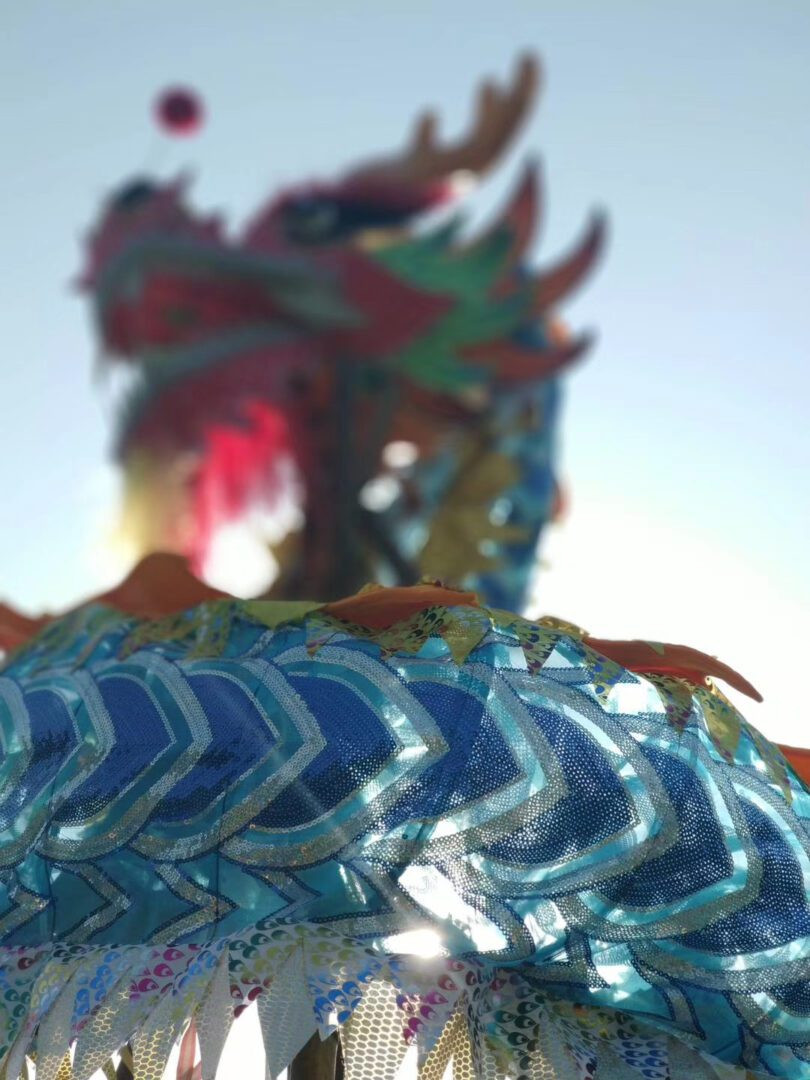 A vibrant dragon dance performance in a street setting, with performers holding poles to maneuver the long, colorful dragon puppet, surrounded by onlookers.
A vibrant dragon dance performance in a street setting, with performers holding poles to maneuver the long, colorful dragon puppet, surrounded by onlookers.
In the rich tapestry of Chinese folklore, dragons are revered as benevolent and potent beings, believed to inhabit waterways and command rainfall. Historical records trace the origins of dragon dances back to the Han Dynasty (206 BCE–220 CE). Initially, these dances served as a vital ritual, performed to invoke blessings for bountiful harvests. Over centuries, the tradition evolved, becoming a powerful means to ward off malevolent spirits and usher in an era of prosperity and good fortune.
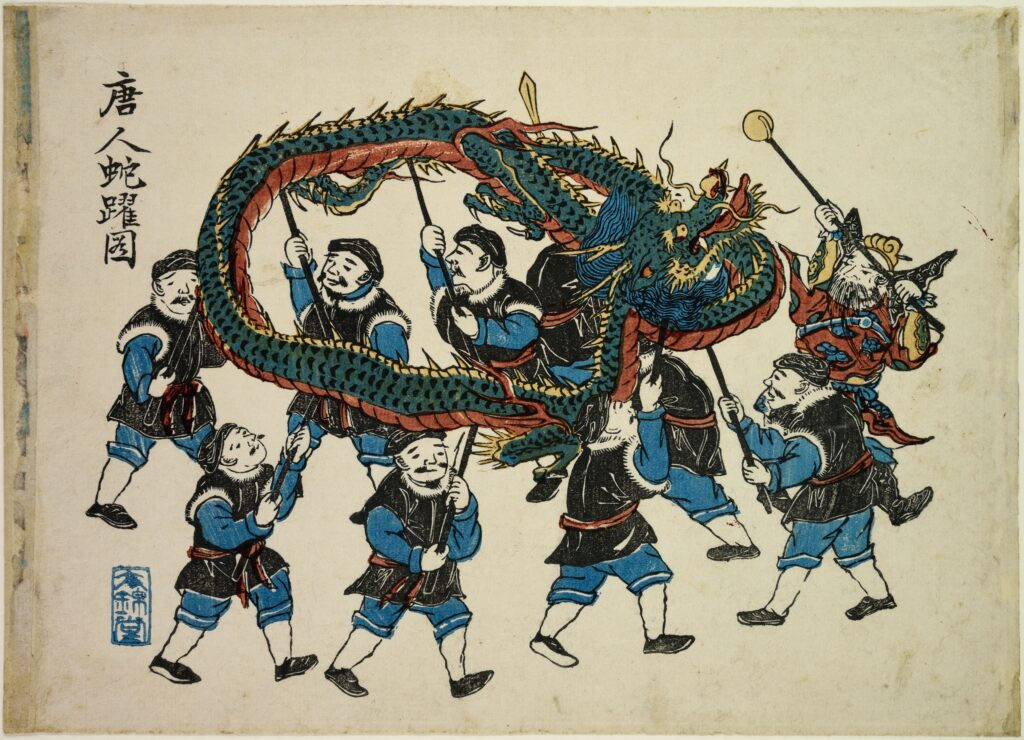 Performers in traditional attire skillfully maneuvering a long, golden dragon puppet during a dragon dance, with a focus on the fluidity and dynamism of the performance.
Performers in traditional attire skillfully maneuvering a long, golden dragon puppet during a dragon dance, with a focus on the fluidity and dynamism of the performance.
Spanning over two millennia, the dragon dance tradition has flourished and diversified across Asia, resulting in a stunning array of styles. Dragon puppets range from playful ten-foot versions for children to colossal, thousand-foot dragons requiring entire teams to lift and animate. Each movement within the dance carries a poetic designation, and every color incorporated into the dragon holds symbolic meaning. While materials for constructing these puppets have varied from woven straw and paper-mâché to even repurposed wooden stools, the most recognized form utilizes bamboo strips covered in decorative cloth.
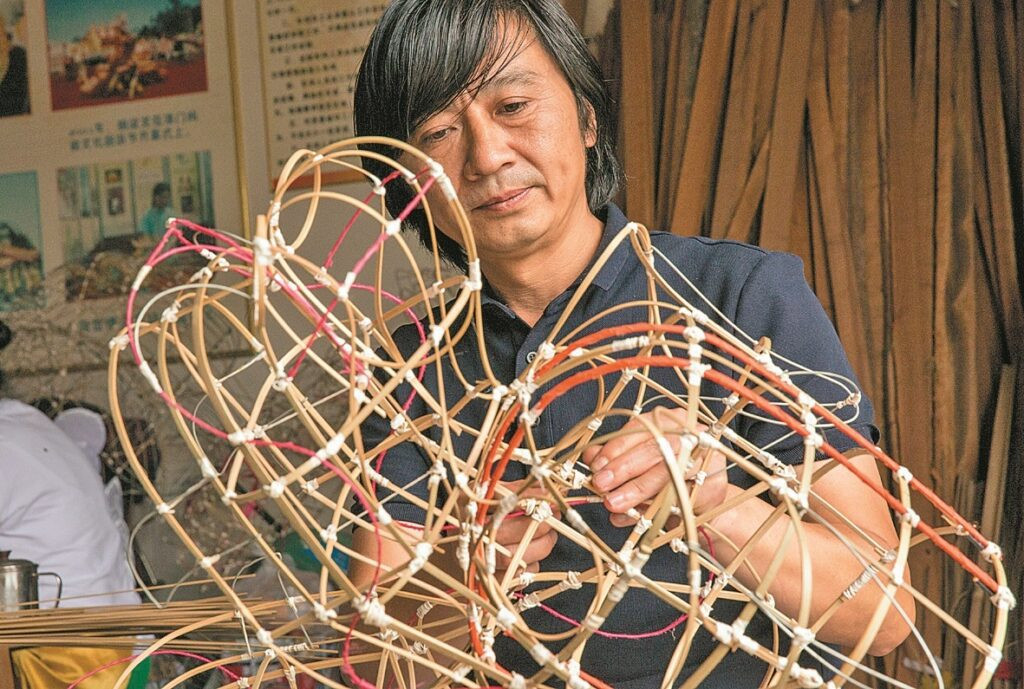 A team of dragon dance performers holding poles, skillfully posing and maneuvering a long, blue and white dragon puppet in a synchronized and artistic manner.
A team of dragon dance performers holding poles, skillfully posing and maneuvering a long, blue and white dragon puppet in a synchronized and artistic manner.
The creation of these dragon puppets is a meticulous craft. Artisans carefully split young bamboo shoots into slender strips, then skillfully bind them with wire to form the dragon’s head, tail, and body segments. Experienced artists dedicate themselves to constructing the head, complete with an articulated jaw, striving to capture the majestic spirit of the mythical creature. The tail and body sections are crafted with precise symmetry, ensuring balance on the control poles used by the dancers. Fabric is then meticulously sewn and glued to the bamboo framework, giving shape to the dragon’s form. Unique character is imparted through embellishments like trimmings and furs, making each dragon distinct.
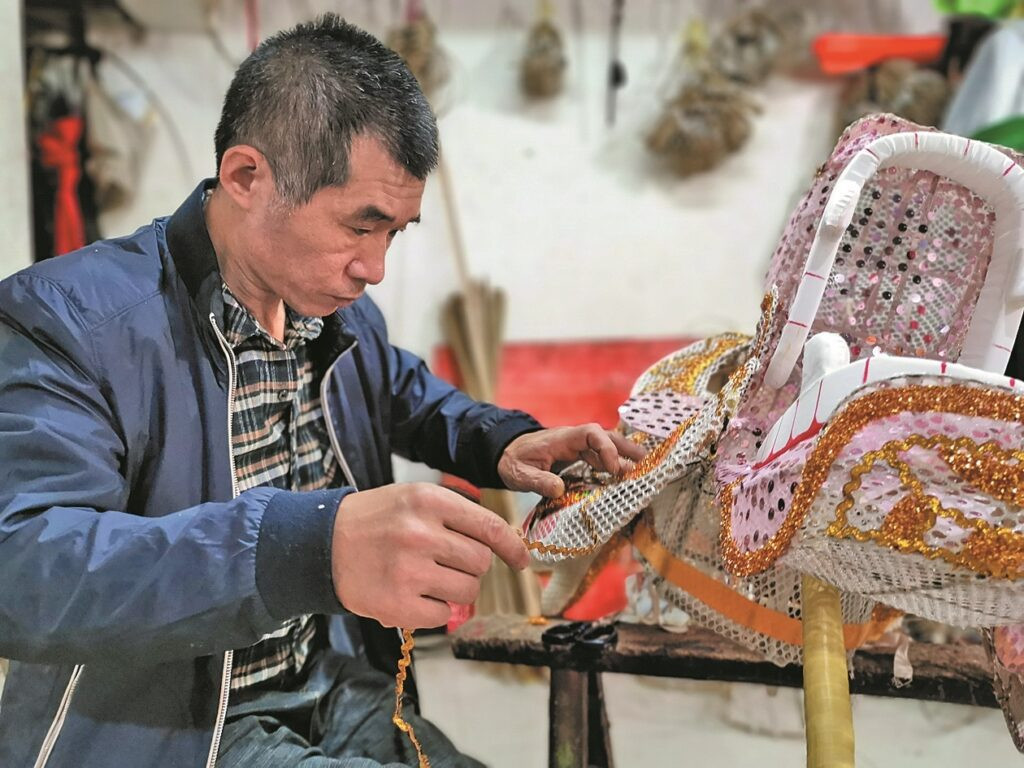 A detailed shot of a dragon dance puppet's head being crafted, showcasing the bamboo framework and the artisan's hands working on the intricate details.
A detailed shot of a dragon dance puppet's head being crafted, showcasing the bamboo framework and the artisan's hands working on the intricate details.
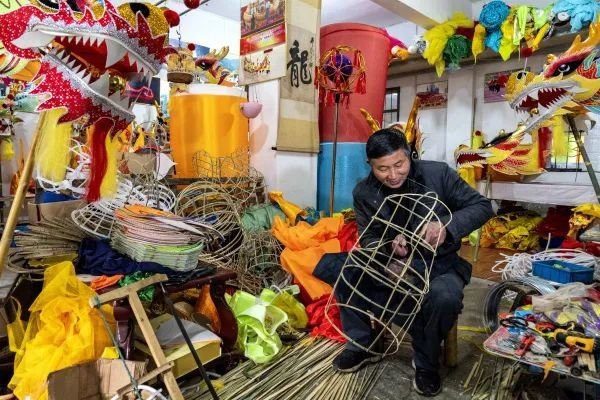 A group of artisans collaborating on the creation of a large dragon dance puppet, highlighting the teamwork and traditional skills involved in the craft.
A group of artisans collaborating on the creation of a large dragon dance puppet, highlighting the teamwork and traditional skills involved in the craft.
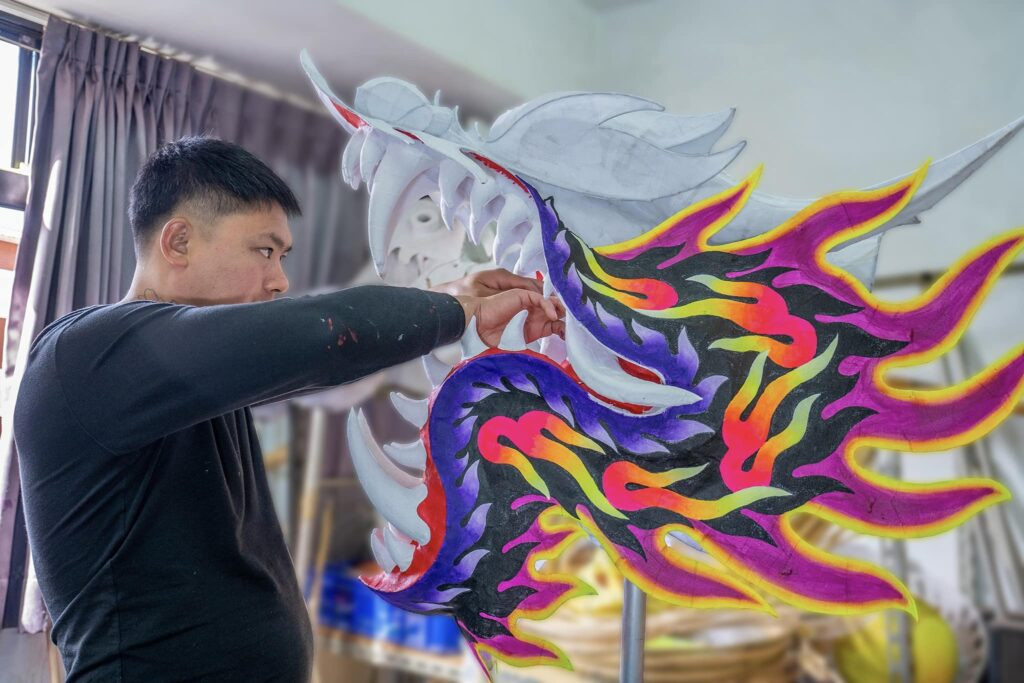 Enthusiastic spectators, including children, closely watching and enjoying a vibrant dragon dance performance during a festive celebration.
Enthusiastic spectators, including children, closely watching and enjoying a vibrant dragon dance performance during a festive celebration.
The art of dragon puppet making has seen rapid advancements in the past century. Traditional hand-painted dragon scales on fabric have largely been replaced by digital printing techniques, streamlining the once laborious process. Modern innovations even include the use of luminous fabrics for dragons that glow under blacklight, and plastic frames substituting bamboo to reduce the puppet’s weight for performers. These advancements have collectively transformed the traditional dance into an even more spectacular and dynamic performance in contemporary celebrations.
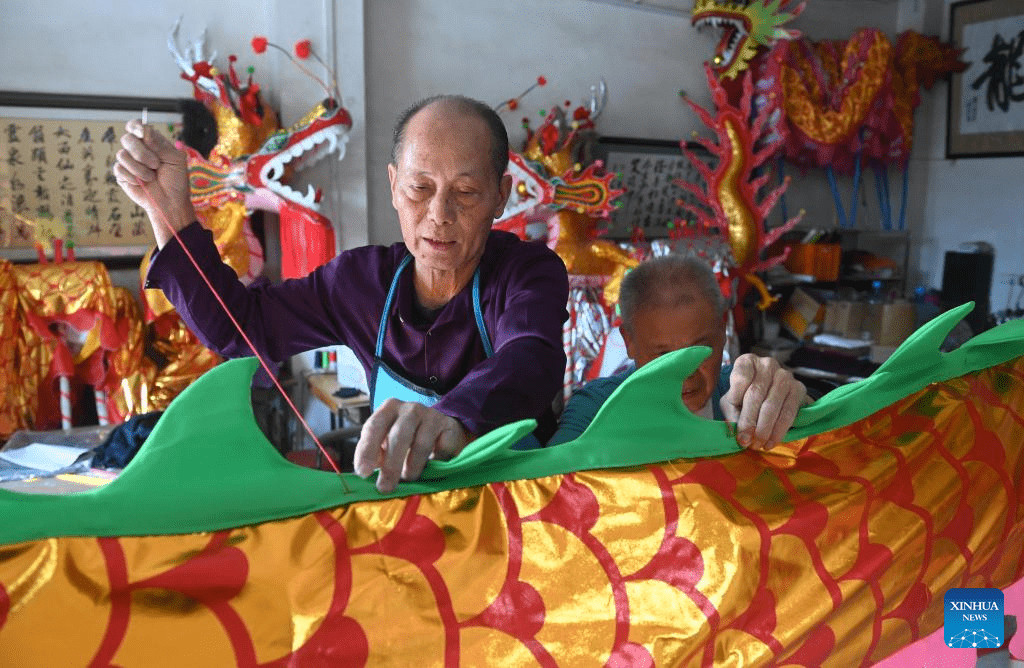 A digitally printed dragon scale fabric sample, demonstrating the modern techniques used in creating dragon dance costumes.
A digitally printed dragon scale fabric sample, demonstrating the modern techniques used in creating dragon dance costumes.
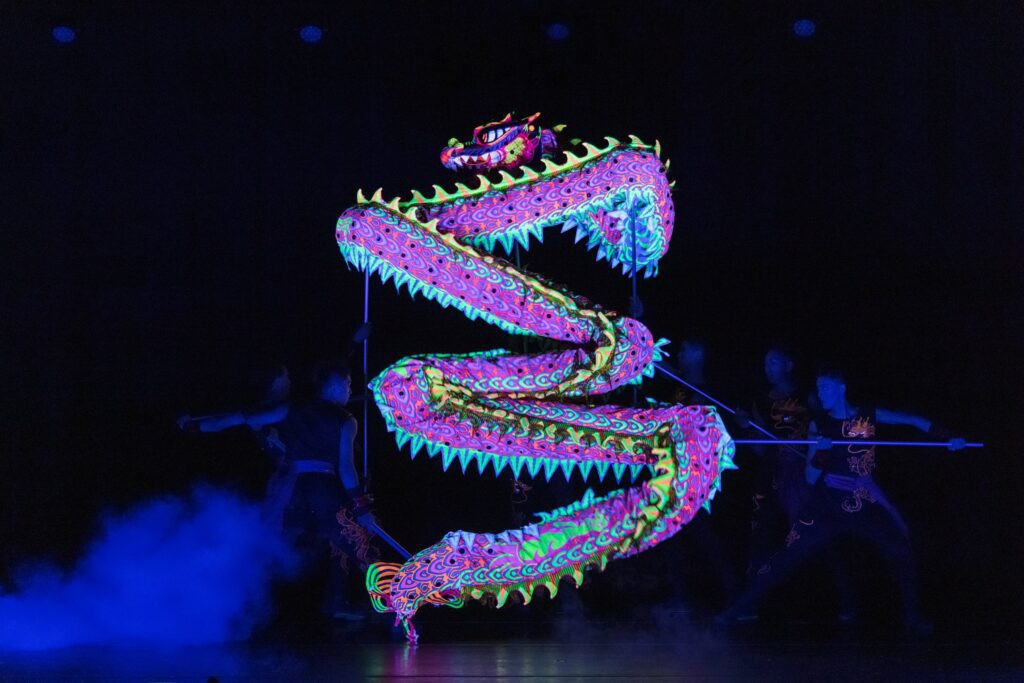 A dynamic dragon dance performance captured during a nighttime celebration, showcasing the illuminated dragon puppet and the energetic movements of the performers.
A dynamic dragon dance performance captured during a nighttime celebration, showcasing the illuminated dragon puppet and the energetic movements of the performers.
Dedicated artists remain committed to preserving the dragon dance tradition, diligently passing their skills to younger generations. Many of these artisans are not only passionate about puppet construction but also actively participate in performances, coach dance teams, and continuously refine their craft. One artist proudly emphasized that their work is only complete when they have personally demonstrated the dragon dance to their customers, ensuring they can ignite the crowd’s excitement for the approaching New Year.
